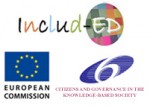In the communicative daily life stories, the researcher and the subject of the research engage in a dialogue to analyse together (a result of the interaction between both) the subject’s reality and relationships in his or her current life, rather than discovering his or her biography. In the communicative observations, researchers and study participants share and argue meanings and interpretations of the observed actions, events and situations, contrasting the information obtained through the observation. Its implementation aims at making a joint evaluation (researchers with participants involved) of the usual behaviours of people, their attitudes, motivations, interpretations, communicative skills and elements that are characteristic of non-verbal language, etc. The communicative focus group, is composed of a group of people who share a given activity on a regular basis, and is conducted in their regular place of gathering (school, workplace, association, home, etc.). The researcher is one more person engaged in the dialogue, and adopts (like the participants) a listening attitude. Any interpretations arisen are argued from an attitude oriented towards understanding and consensus.
The techniques that are not communicative (questionnaire and standardized open-ended interviews) will be implemented with the communicative orientation. In the questionnaires, for instance, communicative orientation will be achieved by involving end-users to work with the research team, from the design phase to the distribution or to the analysis one. In the standardized open-ended interviews, the intersubjective dialogue between equals and the shared reflection will be also created but focused on the professional experience of the person and not on their personal one. In the secondary analysis of existing datasets, literature review, policy analysis and documents, all the major findings and conclusions will be revised by the Advisory Committee, and will be presented in the forums to be discussed with end-users. Teachers’ inputs will be also taken into consideration through their participation in the ten Working Groups. In the content analysis, the communicative orientation will be taken into account by contrasting the items identified in the school documents with school stakeholders.
Standards of validity (Maxwell, 1996; Lincoln & Guba, 1985) will be applied to the corrections or credibility of a description, explanation, interpretation, conclusion, or any other kind of outcome obtained from the project. Eight strategies have been foreseen throughout the five year span, in addition, to the validity standards used in qualitative research, like credibility, transferability, dependency and confirmation. Triangulation has been secured in the research design by the combination of different data collection methods in each study. Member checks involve meeting with a subset of the study participants to discuss accuracy issues. Describers of low inference will be used in all the interactive techniques. Peer reviews and thick descriptions have been foreseen.
